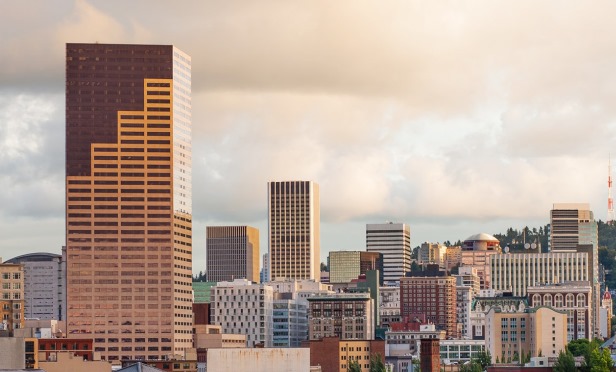 Vast new areas of Portland have been radically transformed during the last decade.
Vast new areas of Portland have been radically transformed during the last decade.
PORTLAND, OR—Portland has come and grown a long way in the last 10 years. The previous decade began in a deep recession and ended with a booming economy. Along the way, the region has been labeled with many bests: economy, place to start a business, food city, commuting city, airport, etc.
For these reasons, the Portland metro is widely revered as a desirable play to live, work and play, according to Cushman & Wakefield's Changing Skyline, which covers development trends and the impact of Portland's commercial real estate sector during the past decade.
"Everywhere you look, it seems there is something new and exciting happening, whether a new project, a new restaurant, another tech startup or simply a new neighbor," said Samuel Hatcher, research analyst at Cushman & Wakefield's Portland office. "Whole new areas of town have been radically transformed over the last decade such as Slabtown, North Williams, Division Street and the Close-In Eastside."
In total, more than 85 million square feet of new commercial development has been delivered to the market in the last 10 years to meet the area's growing population and changing demographics, according to the report.
"It's astonishing how much has been built or is under construction and by no means is this construction cycle near over. There is still 16.1 million square feet under construction across all product types with very transformative buildings such as Block 216 at 10th & Alder yet to be delivered," said Hatcher.
The statistics show just how dramatic that growth has been. The Portland metro population has grown by more than 275,000 people, up 12.4% between January 2010 and December 2019. Meanwhile, 239,000 new jobs have also been created, an increase of 24.4%. And, the area has gotten wealthier with median income of $79,761, up 46.3% during this same time, representing one of the largest increases of any major US metro area.
The TV show Portlandia dubbed Portland "the place where young people go to retire" but in reality, it is actually where many young people move not only for the hipster vibe but also innovative and creative jobs, affordable living and an outdoor, active lifestyle. In fact, Oregon had the sixth fastest growth in the nation for the prime 25- to 39-year-old age demographic at 15% growth from 2010 through 2018, according to Multnomah County Economic Indicators.
And, Portland is the second most popular destination for San Francisco transplants, attracted to the Northwest market by its well-paying jobs and comparatively more affordable living, according to LinkedIn. The "rent-to-tech wage ratio" comparing average apartment rent to the average tech wage is 17.8% for Portland compared to 26.4% in the Bay Area, meaning at least for tech workers, the Portland area is about 50% more affordable than the Bay Area.
"Portland's relative affordability and many lifestyle options will continue to drive employers and employees to our market, contributing to the increase in our labor force and historically low unemployment levels," Hatcher tells GlobeSt.com. "Advancements in industry-specific technologies and expertise have allowed developers and designers to make more informed decisions. They are having the awareness and access to understand occupier shifts and sentiment as a result of changes in demographics, their preferences for space layout and design, varying amenities and so on as they are happening, which continues to lead to increased efficiency and steady improvements throughout Portland's commercial real estate industry overall. Furthermore, their understanding the need for new creative workspace that facilitates increased collaboration and productivity demanded by the highly educated workforce flocking to Portland has allowed developers to capitalize on repurposing old industrial properties as a viable option for bringing new creative office space to the market."
© Touchpoint Markets, All Rights Reserved. Request academic re-use from www.copyright.com. All other uses, submit a request to [email protected]. For more inforrmation visit Asset & Logo Licensing.







